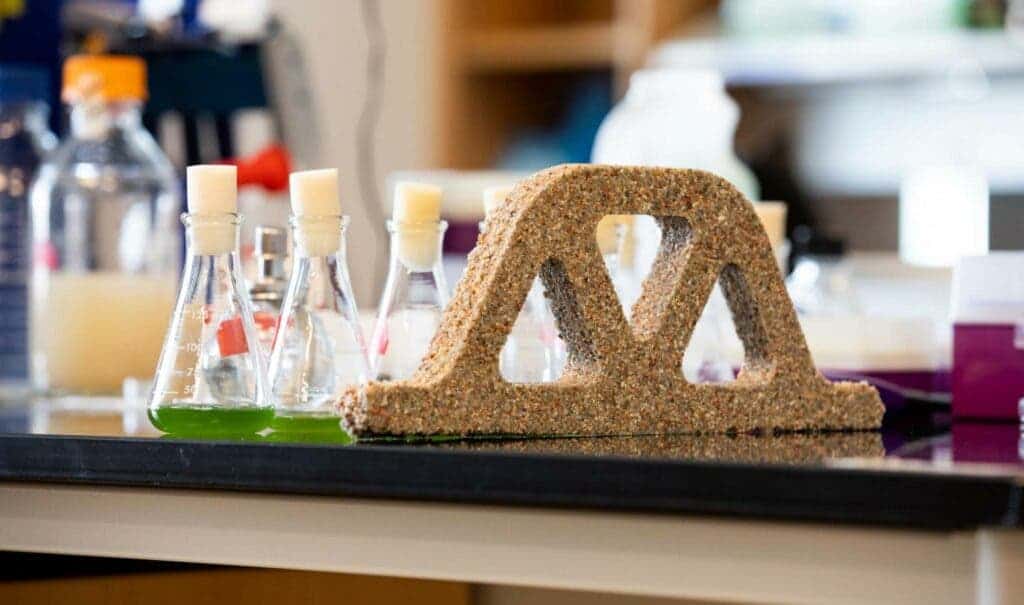Human-made materials that can grow and adapt to their environment are closer than you probably think. They’re called “animate materials” and could deliver major changes across a range of sectors, from electronic devices to infrastructure, according to a report by the Royal Society. The report says animate materials can unlock a wide array of environmental benefits in the near future, but there are also a few problems.

Medical devices that can speed up healing and target doses automatically, clothing that changes according to the person’s body and walls that harvest carbon dioxide (CO2) from air to heal themselves are only some of the innovations highlighted in the report — these are just some of the inventions that are already being researched and could soon be a reality.
Animate materials can be defined as materials that are sensitive to their environment and able to adapt to it in a number of ways. This behavior can be broken down into three characteristics, or principles, of animacy.
“We are going from an inanimate view of materials, where we make them, they are sophisticated but they fall apart and then we replace them, to a more biological view of the stuff we are going to make,” Mark Miodownik, one of the report’s co-chairs, said in a statement. “Bridges in the future are going to know they are damaged and then they are going to be able to do something about it.”
Features of animate materials
Active materials can change their properties or perform actions, typically by taking energy, material, or nutrients from the environment. The principle isn’t new — they’ve been known and even used for a long time in everyday devices, such as headphones, electric toothbrushes, as well as in specialist equipment, such as vibration sensors and sonar systems. But researchers are now close to taking things to the next level.
Much of the current research on active materials is happening at a micro- or nanoscale, in part because a lot of this work has been inspired by living matter, which is driven by processes taking place at these scales. Living cells rely on a variety of protein molecules that can change their shape in response to external stimuli, producing movement. If we could mimic the same reactions in everyday materials, it would be revolutionary.
“One area set to benefit from the creation of materials capable of movement and action is medicine. To carry out surgery or take biopsies, invasive procedures are often required in order to reach the target tissues. However, molecular or microscopic machines small enough to be injected into the bloodstream might be able to make small incisions, repair damage, or sense and collect data,” the researchers wrote.
The second feature of animate materials is that they are adaptive, which means that they can sense changes in their environment and respond in a way that maintains or promotes their function, typically with a single predetermined outcome. For example, by self-healing, including those that overcome typical problems of degradation such as cracks in roads or walls, or scratches on the paint of a car, or even in clothes.
Such adaptive self-healing has existed to a degree for millennia. For example, the asphalt mixture used in roads also displays some self-healing properties as it contains both gravel or rock and bitumen, a viscous black liquid that can flow into small cracks in the material. However, the process is very slow because of the high viscosity of bitumen and is frequently insufficient to prevent such cracks from growing.
Researchers are now seeking to build on these long-established processes with the ultimate goal of creating materials that do not require maintenance because they are able to self-diagnose continuously and repair any damage they suffer. There are already several commercial examples of self-healing paints and coatings being marketed for use in buildings and vehicles.
Finally, the report also highlights the autonomous feature of animate materials. This means they can automatically “decide” on an appropriate response to signals or changes in the environment from a repertoire of possible outcomes, without being monitored or controlled. They show versatility in combining various inputs to generate a suitable behavior from a diverse repertoire.
“Examples include robotic-like materials, such as an amorphous facade that recognizes and changes color in response to a user’s gestures and an intelligent skin that senses touch and texture using sensor nodes to detect vibrations,” the researchers wrote. “Autonomy could enable responsive infrastructure and prosthetics, as well as everyday items such as tabletops that warm or cool food.”
Risks ahead
It all sounds great, but researchers also warn that we need to carefully assess and manage any potential risks from animate materials. For example, smart materials can make more efficient buildings, but would they also make buildings more vulnerable to damage? Similarly, medical applications will be examined for risks comparable to those of current therapies — such as sensors that might misdiagnose conditions.
Nevertheless, the short-term risks are believed to be relatively low as animate materials remain at the exploratory stage. In the medium term, researchers anticipate risks to grow as materials are programmed but not yet fully autonomous. In the longer term, more autonomy can be expected and while the resulting materials promise many potential benefits they will be less predictable.
“Careful regulation and clear communication will be required to address such concerns. Society should prepare for this, but there is plenty of time to do so, and this should not hold back development in the short term. However, there is no room for complacency, and the calls to action that conclude this Perspective include provisions for regulation, including a multidisciplinary committee to consider options for monitoring and regulation,” the researchers wrote.


